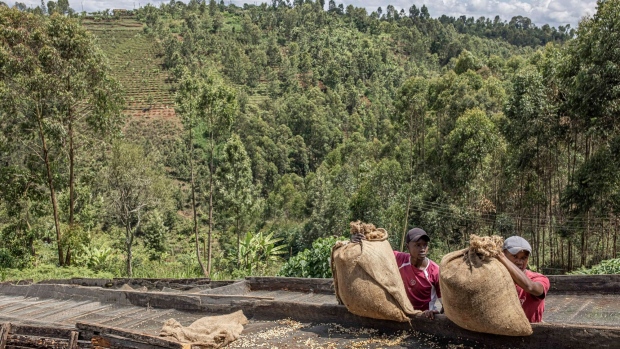Jul 3, 2024
Kenya Economy Expands 5% in First Quarter After Good Weather
, Bloomberg News

(Bloomberg) -- Kenya’s economy grew at its slowest pace in more than a year in the first quarter and may face further pressure from floods and deadly protests that shuttered businesses.
Gross domestic product rose 5% slightly lower than the 5.1% recorded in the fourth quarter, as mining output contracted for the second quarter in a row and agriculture, its mainstay, expanded at a slower pace, according to data released by the Kenya National Bureau of Statistics on Wednesday.
Farming grew 6.1%, compared with 6.2% in the three months through December. Kenya is the world’s biggest exporter of black tea; production of the leaves surged 43% in the first quarter.
“The performance of the sector was attributed to favorable weather conditions as well as government interventions that led to enhanced production,” the Kenya National Bureau of Statistics said Wednesday in an emailed statement. “However, the sector’s performance was somewhat curtailed by decline in exports of coffee, fruit and cut flowers.”
Heavy rains that killed almost 300 people in the second quarter, destroying swathes of croplands and curtailing flower output, will likely dent growth, as will recent violent protests over government plans to raise taxes.
At least 39 people have died and hundreds more have been injured since demonstrations against President William Ruto’s administration began two weeks ago, according to the state-appointed Kenya National Commission on Human Rights.
The protesters were initially opposed to Ruto’s plan to introduce a range of new taxes. Those proposals have since been scrapped, but demonstrators are now calling for him to step down and for state corruption and wasteful government expenditure to be ended.
A purchasing managers’ index for Kenya compiled by S&P Global and Stanbic Bank dropped to 47.2 in June from 51.8 a month earlier as the protests hurt sales and fanned policy uncertainty.
The government expects the economy will expand 5.5% in 2024, compared with 5.6% expansion last year. That’s a b it more optimistic than the IMF’s projections for 5% growth.
(Updates penultimate and final para on PMI. Adds chart)
©2024 Bloomberg L.P.





